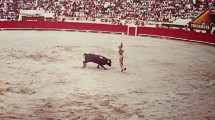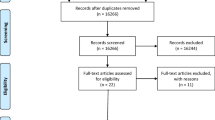Abstract
Visual evoked potentials (VEPs) of the pattern shift reversal type were determined in a representative group of 57 prisoners of war (POWs) released in 1992 from detention camps in former Yugoslavia. The parameters were correlated with the conditions in four camps (1–4). All subjects were male, with a mean age of 34.75 years (SD ± 8.92), average length of imprisonment 192.7 days (SD ± 77.6), mean loss of body mass during imprisonment 19.32% (SD ± 9.54), and the average number of reported blows to the head and neck was 25.7 (SD ±20.3). VEPs were determined on average 290.5 days after the last craniocerebral trauma caused by blows to the head and neck (SD ± 152.0) i.e. on average 218.5 days after release from the camp (SD ± 164.3). Although all the 57 POWs reported being maltreated to a certain extent, 14 reported being subjected to particularly brutal forms of torture, 5 had been held in solitary confinement and 25 had lost consciousness at least once. Solitary confinement and loss of consciousness had the most significant effect on VEPs, and the altered VEP parameters correlated significantly with the craniocerebral trauma experienced, loss of body mass and the length of time since the last craniocerebral trauma until examination, and from release until examination. However, the length of imprisonment and treatment in the camps did not have a significant effect on VEP parameters. The study confirmed that under such conditions the age of the subject is a risk factor. The results of this study also confirmed that prisoners in one camp had been subjected to the worst maltreatment.
Similar content being viewed by others
References
Barry SO (1990) Statistics for evoked potentials. In: Chiappa HK (ed) Evoked potentials in clinical medicine, 2nd edn. Raven Press, New York, pp 593–607
Borčič D, Kuzman E, Bobinac I, Beus S, Schonwald J (1992) Medical status of prisoners of war from Manja≈a and Glina camps. Croatian Med J 33 [War Suppl 2]:93–96
Brasko-Borčič M, Borcic I (1993) A review of the health status of prisoners from the Kupres and Livno war zone immediately after release from the camp in Knin. Acta Med Croatica 47 [Suppl]:123–125
Chiappa HK (1990) Pattern-shift visual evoked potentials interpretation. In: Chiappa HK (ed) Evoked potentials in clinical medicine, 2nd edn. Raven Press, New York, pp 111–155
Dekaris D, Sabionchello A, Maourar R et al. (1993) Multiple changes of immunologic parameters in prisoners of war. JAMA 270:595
Gilmore R (1988) Principles of signal analysis and averaging. Neurol Clin 6:649–657
Halliday AM (1993) The visual evoked potentials in the investigation of the optic nerve, chiasmal, retrochiasmal lesions, field defects and systemic diseases. In: Halliday AM (ed) Evoked potentials in clinical testing, 2nd edn. Churchill Livingstone, London, pp 141–279
Kozarić-Kovačić D, Folnegović-Šmalc V, Marušić A (1993) Psychological disturbances among 47 Croatian prisoners of war tortured in detention camps. JAMA 270:575
Lončar M (1993) Conditions of living and ways of health destroying in the concentration camp Begejci. Acta Med Croatica 47 [Suppl]17–18
Niedermayer E (1990) Evoked potentials. In: Niedermayer E, Lopes de Silva F (eds) Electroencephalography. Basic principles of clinical applications and related fields. Urban-Schwarzenberg, Baltimore, pp 315–375
Novotny Z (1992) Manjaca: how the Yugoslav Federal Army treats the prisoners. Croatian Med J 33[War SuppI 2]:90–92
Solar V (1993) Life in the concentration camp Bučje — The treatment and methods of the enemy's mental and physical torture of POWs. Acta Med Croatica 47 [Suppl]:11–12
Solar V (1993) The concentration camp in Stara Gradiška: medical help given to the POWs in the concentration camp conditions. Acta Med Croatia 47 [Suppl]:13–14
Vrca A, Bobić J (1993) EEG changes in prisoners released from Serbian concentration camps during the war in Croatia 1991–92. Acta Med Croatica 47:87–89
Author information
Authors and Affiliations
Rights and permissions
About this article
Cite this article
Vrca, A., Bozikov, V., Brzović, Z. et al. Visual evoked potentials in relation to factors of imprisonment in detention camps. Int J Leg Med 109, 114–117 (1996). https://doi.org/10.1007/BF01369669
Received:
Revised:
Issue Date:
DOI: https://doi.org/10.1007/BF01369669




